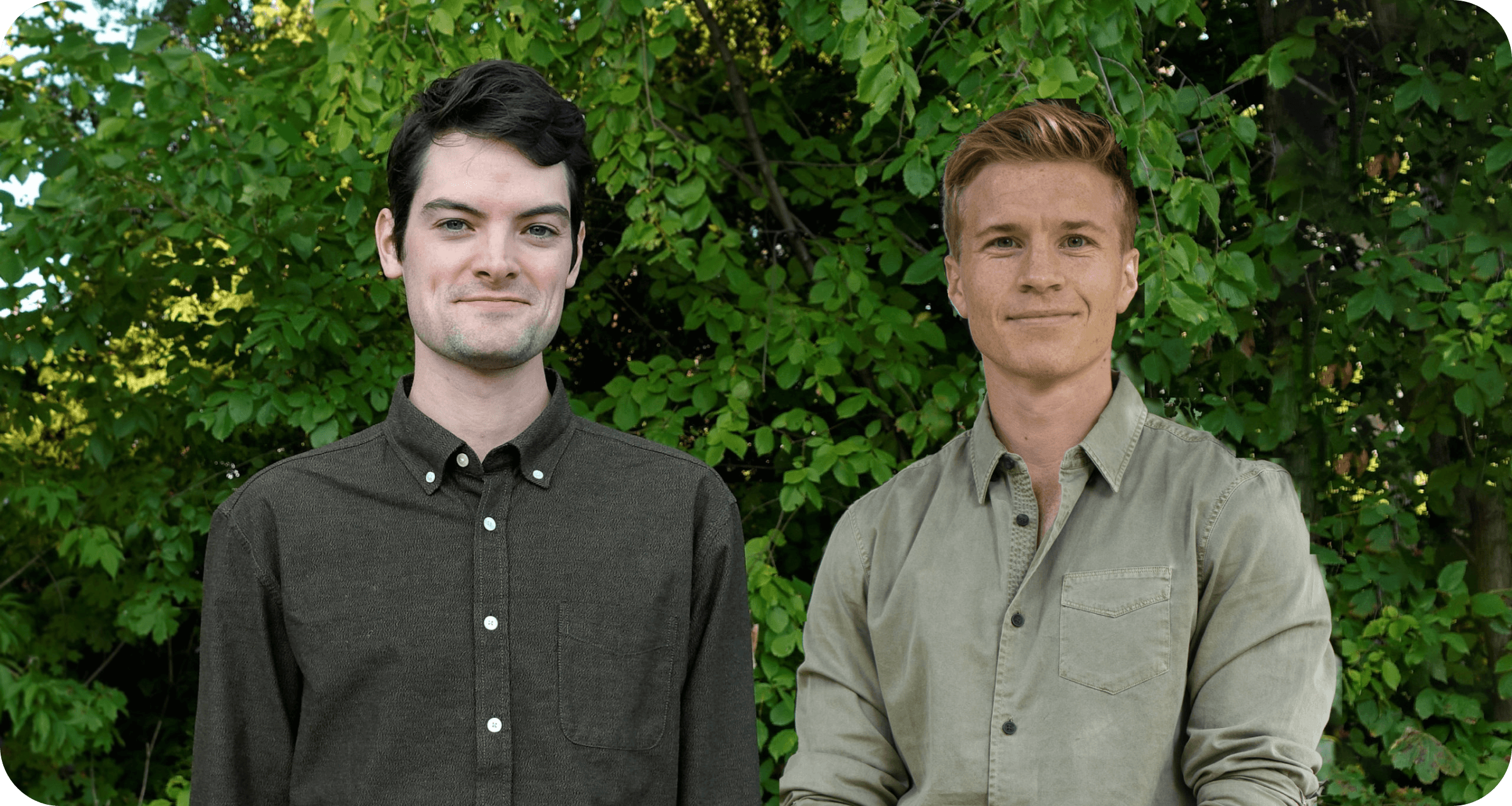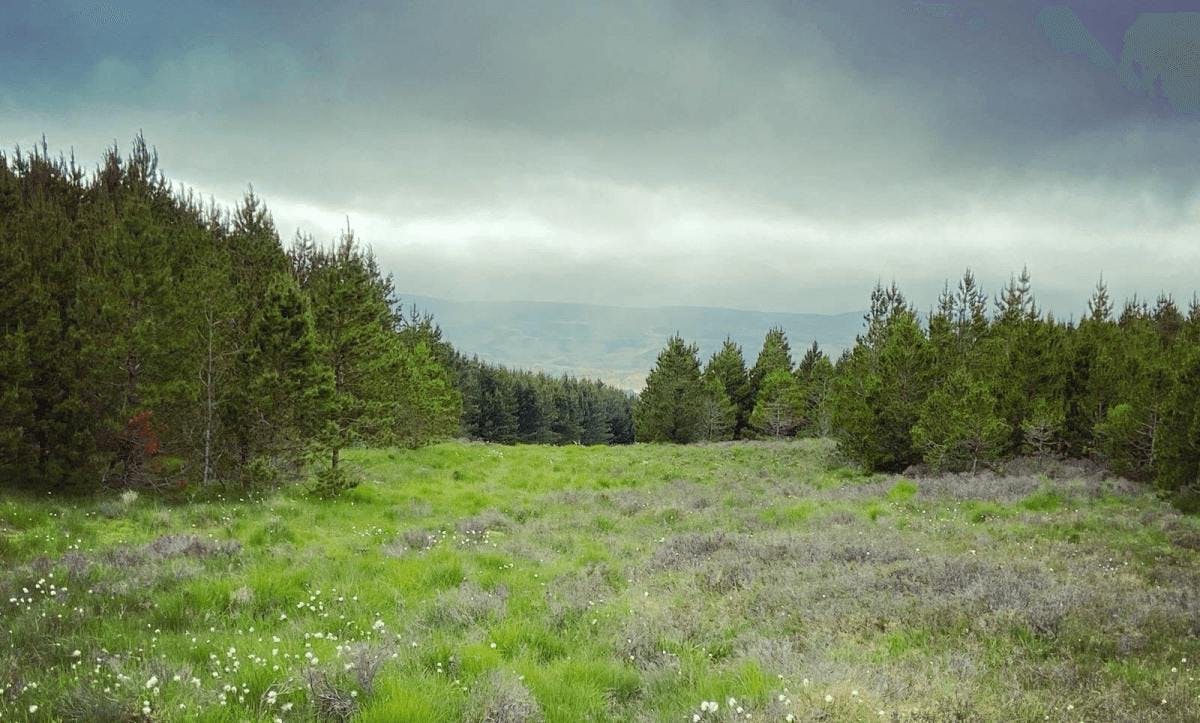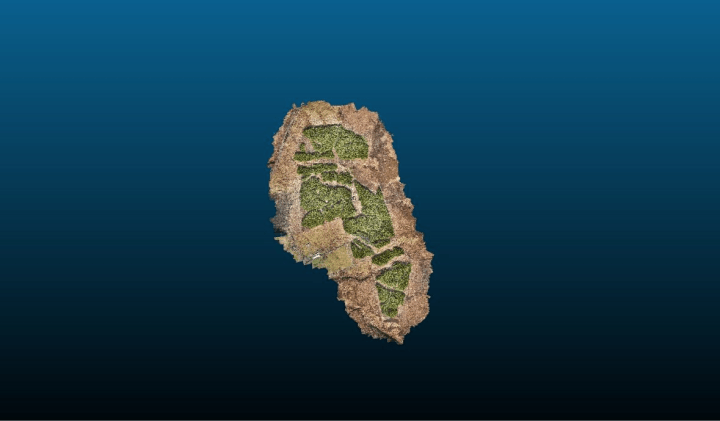

Carbon project developers are leading the way in the fight against climate change. They’re the innovators coming up with new ways to reduce and remove carbon emissions, or to make existing methods more effective. They’re our champions in climate solutions – but we don’t get to hear from the voices behind these projects often enough.
We want to change that, bringing the human stories behind climate solutions to light, to better understand how they’re being developed.
In this post, we’re chatting with Harry Grocott and Rob Godfrey, co-founders of Treeconomy.
Treeconomy is an organisation developing nature-based carbon removal projects, and using measuring and monitoring technology that ensures accuracy of climate impact. At Lune we partner with Treeconomy because of this focus on accuracy – which increases trust and transparency in carbon projects.
The past – Treeconomy’s origin story
First off, we wanted to find out a little about the background of Treeconomy. How did it come about? And why is it such an important area to work on?
What initially interested you in nature-based projects and their role as a climate solution?
Rob: I’ve always loved nature and was fortunate enough to experience plenty of wild places growing up in Canada. Wildlife and the environment were childhood passions I was able to further develop while studying ecology and environmental science at university. First-hand experiences of destructive clearcut logging, coral bleaching, and extreme weather helped to cement a desire to restore nature and enlist its help in addressing the climate and biodiversity crises.
A semester spent on fellowship at the University of Washington brought me closer to the subjects of restoration ecology and forestry. I then spent a period as a researcher at the University of Toronto’s Centre for Global Change Science, working at the intersection of climate and forestry science (and conducting research on biochar – another favourite climate solution). A Global Sustainability Fellowship formally introduced me to the principles of systems thinking and drew me further towards a career in nature-based solutions (NBS).
The beauty of NBS is that restoring nature helps us to not only mitigate harm but actively reverse it.
The overexploitation of nature is a major reason for our present crisis, in which climate and ecological breakdown are deeply entwined; in this way, we’re addressing a fundamental cause, rather than just removing carbon dioxide from the atmosphere.
Nature-based solutions offer so much more than climate mitigation benefits: they improve our climate resilience, harbour and enhance biodiversity, provide valuable goods, and support our basic livelihoods. At a global scale, NBS (done right) offer an opportunity for environmental justice, facilitating transfers of money from urban to rural, north to south, and rewarding those that protect and regenerate nature for the benefit of all of us.
We’ve got lots of problems: there is no such thing as a panacea, but let’s get behind solutions that offer real win-win-wins. Nature can do that, it just needs a hand.
And how did Treeconomy come about, what brought the two of you together as co-founders?
Rob: Harry and I met at Imperial College London, where I was completing my Masters in Environmental Technology and Sustainable Business and he was beginning his in Climate Change Management and Finance.
I was attending a summer masterclass on transitions to a net zero economy and Harry joined to share his idea for the use of remote sensing technology to enable scalable and impactful investment into nature-based projects.
I’d had an interest in environmental markets, carbon removal, earth observation, entrepreneurship and a desire to maximise my own personal impact in addressing the climate and ecological crisis.
The idea for Treeconomy combined too many things I cared about. The chance to build something meaningful at the intersection of tech, finance, and nature – and to do so with a bright and passionate co-founder – was too good to ignore. I basically said as much to Harry and we made it official shortly thereafter. We’ve refined and evolved the idea for Treeconomy over the last several years, but we haven’t wavered on the basics: it’s still all about using tech to help markets help nature.

The present – Treeconomy’s work so far
Then we moved on to chat about where the organisation has got to so far. What is the current focus of the organisation?
Tell us a little about that intersection between nature and technology – why is this important in the forestry projects you’re currently working on?
Rob: Forestry projects, like afforestation (planting new forests), is a proven climate solution and trees are an ancient and reliable carbon removal technology.
Forests, through transpiration and as powerhouses of carbon sequestration, play a vital role in regulating our climate. It’s estimated that afforestation and other nature-based solutions can provide roughly 30% of the cost-effective mitigation required to achieve our Paris goals (Griscom et al paper).
While no carbon removal technology is a panacea or remotely adequate on its own, forests can make a major contribution in the climate fight. Crucially, forests do so much more than just suck carbon out of the air. They’re hotbeds of biodiversity, with roughly 80% of terrestrial wildlife being dependent upon forests for survival. By restoring nature, we address the twin, and deeply linked, crises of climate and ecological breakdown.
However, not all forestry projects are equal. It’s important that carbon credit purchases be used to fund projects that are carefully designed, managed, and monitored to deliver genuine environmental and social impact.
Carbon is generally quantified based on tape measure sampling, sparse tree counting, rough growth equations, and once-every-ten-year verifications. As we demonstrated at the Ackron Mixed afforestation project in Scotland that we manage, these methods can be rife with error.
Instead, we’re aiming to bring measurement and monitoring into the 21st century with remote sensing and AI technology that provides a rich, reliable, and regular view of forest carbon projects. With science and data, we’re bringing trust to the space and helping corporate customers to support high-quality projects with confidence.
Harry: Measurement and monitoring is a vital part of a nature-based carbon removal project; it should be seen as a fundamental part of the ‘carbon removal technology’. When you build a wind turbine for renewable electricity you include a metering system to count the electrons, and companies then pay for those electrons. Doing an afforestation project without technology like ours, for instance, is like not counting the electrons; it's guesswork at best, and carbon credit buyers are now realising this.
Using Ackron Mixed as an example, have there been any surprising findings from Treeconomy’s tech?
Harry: The biggest surprise came with our first assessment of the project. We worked with the UK carbon standard, Woodland Carbon Code, to support the 15 year verification and we found there was half as much carbon within the project as they had projected. This was a big change and highlights the importance of high quality, ongoing monitoring, and accounting for carbon removal. It's why we will be using this technology on all of our projects.
Rob: Comparing our methods to conventional manual assessment results at the Ackron Mixed project really underscored the numerous sources of error that can undermine the credibility of a carbon sequestration claim. Overall outcomes for conventional measures are highly sensitive to the number and location of samples; it’s very easy to skew carbon stock results. Without even touching upon improved growth equations, it shows the value of the comprehensive tree count and measurement outputs that our tech can provide. We’d also like to thank the Woodland Carbon Code for their ongoing engagement and sincere commitment to building a market that upholds integrity and quality.
How do you go about identifying which projects you take on?
Rob: For starters, we have our own quality assurance requirements and don’t compromise on our core impact values. We’re also continuing to learn to ensure our work reflects evolving best practice and developing science. When it comes to our woodland creation and restoration efforts, we’re big believers in the old mantra “right tree, right place” with the added understanding that many places are not right for trees (think peatlands or species-rich grassland).
More than that we think about creating ecosystems, rather than simply planting trees (which is not the same as growing trees!). We maintain minimum quality criteria that exceed the standards, such as the Woodland Carbon Code and UK Forestry Standard. We do not work with monocultures and insist upon a majority-native species mix, as well as alignment to local ecology and vegetation community so that we are emulating native forest communities as much as possible.
Furthermore, we work with experienced and value-aligned delivery partners and collaborate closely with landowners to take advantage of local knowledge for successful project design.
All of our partners and customers formally agree that projects shall be designed and delivered for holistic environmental net gain and social benefits as the primary aims (rather than, say, timber production).
Of course, we always bear in mind the key attributes of additionality, leakage, and permanence; wherever possible we set our projects to the maximum allowable duration (100 years in the UK).
Finally, we measure and continuously monitor every woodland project with our remote sensing and AI tech stack, and present this data through our Sherwood platform so that customers can actually see and confirm the impact of their credit purchases. Keeping track also means we can intervene proactively if we or our buyers notice something’s gone wrong with a project.
We’re committed to holding ourselves accountable to our quality goals by offering our customers full transparency and traceability.

The future – the ultimate goal for Treeconomy
Finally, we discussed the big picture for Treeconomy. The organisation is already making such a big impact in ensuring real climate impact through nature-based projects. But what does the future look like?
What are your future goals for Treeconomy?
Rob: Though things never happen fast enough when it comes making headway on climate, the nature-based carbon removal space is definitely evolving incredibly rapidly with new innovations, new players, and new policies coming in all the time.
We’re certainly always looking to contribute to the development of the sector, rather than riding the wave passively. One way we do this is by investing in R&D and developing tools and methods that not only enhance quality, but boost scale and variety in nature-based carbon removal.
For example, we’re part of an exciting government-funded consortium focused on rewilding and the way in which our monitoring technology could scale passive rewilding efforts by connecting them to carbon finance for the first time.
That’s probably what I’m most excited by: using tech to actually bring whole new project types to the market. Scaling up supply is going to be vital.

Find out more about the Ackron Mixed afforestation project in the Lune dashboard (nb: you’ll need to log-in or sign-up to see the project page).
Readers also liked
Readers also liked

Subscribe for emissions intelligence insights
Get the latest updates in the world of carbon tracking, accounting, reporting, and offsetting direct to your inbox.


